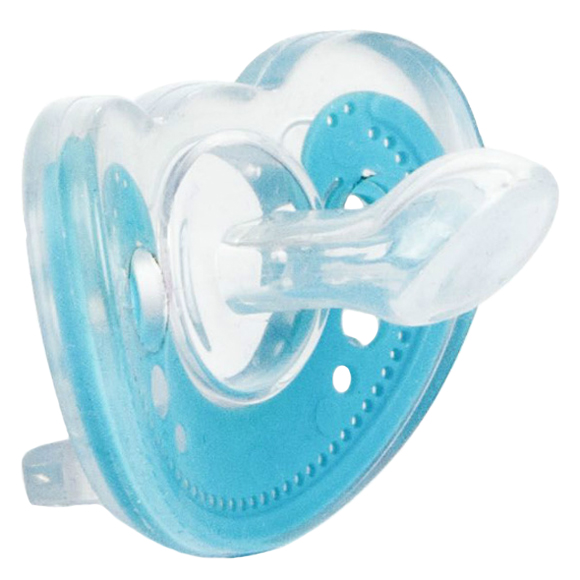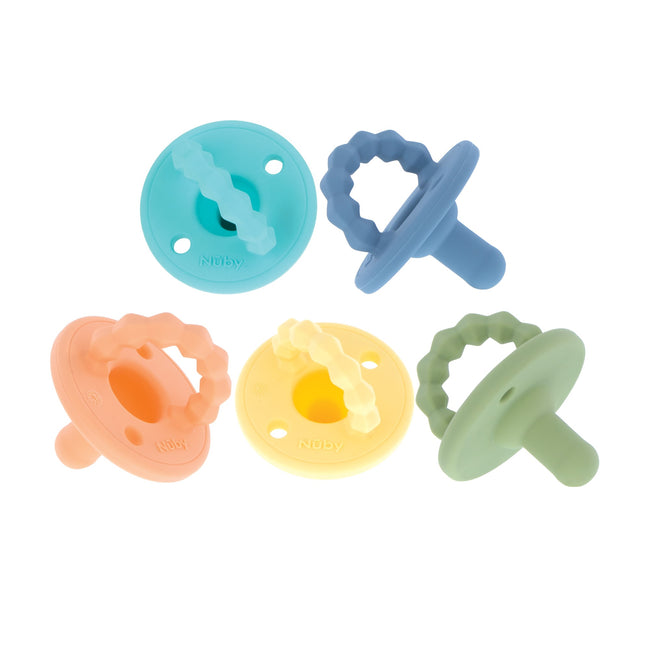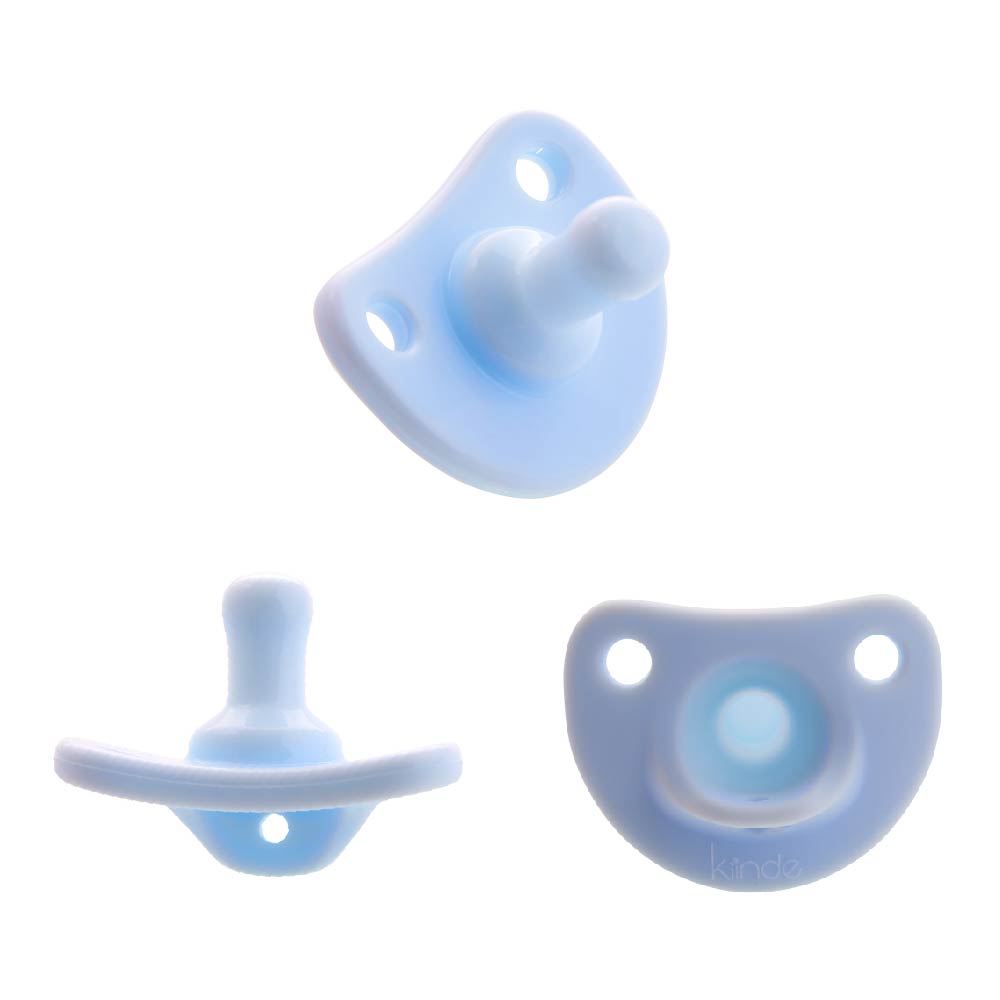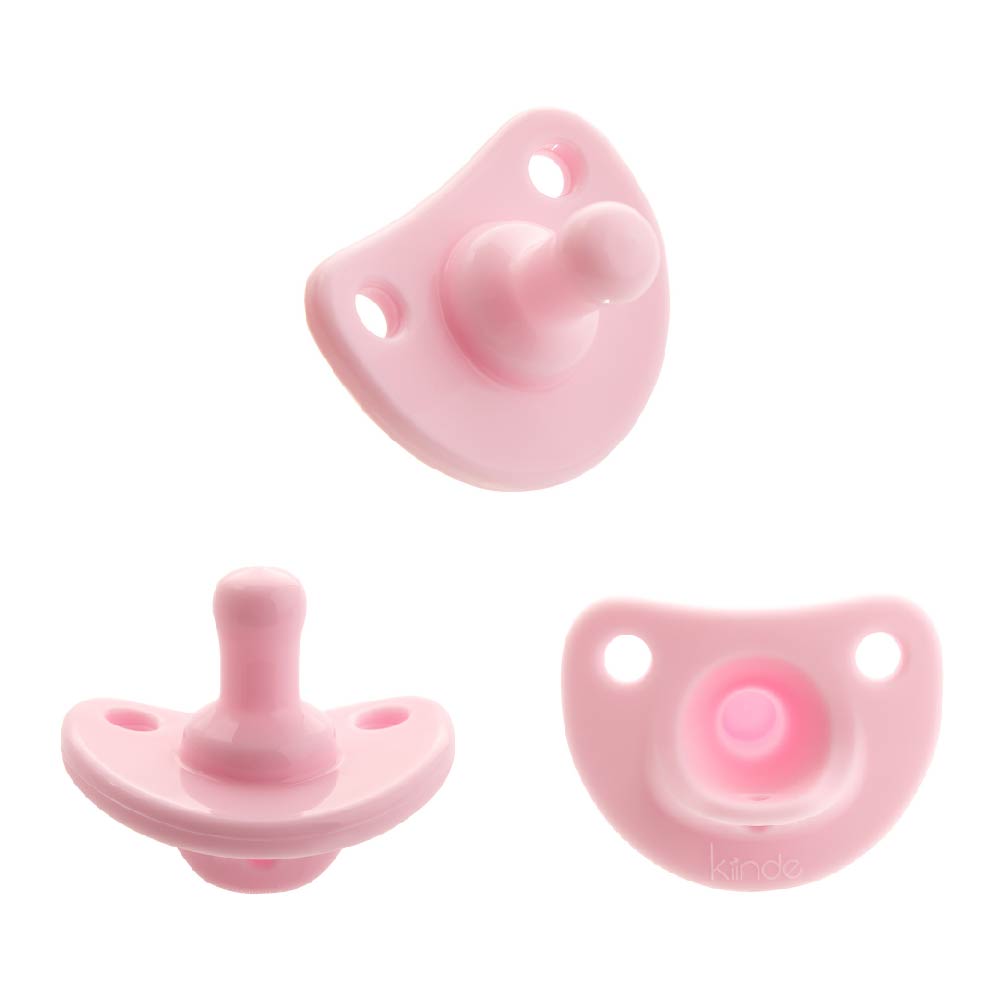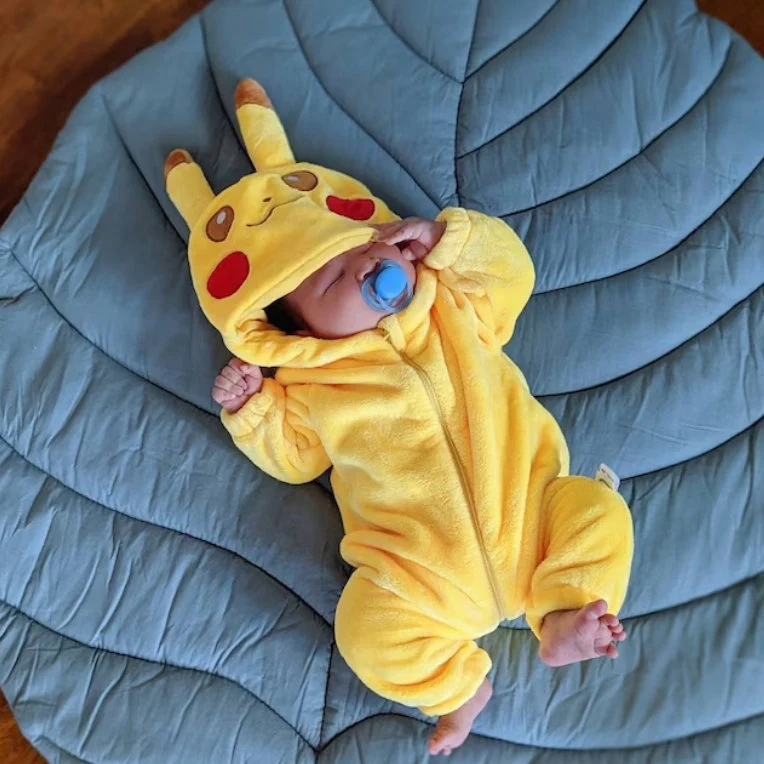Benefits of Pacifiers for Babies
Pacifier as a Source of Comfort
Pacifiers often bring comfort to babies when they are fussy. They can provide relief between feedings, helping calm a crying baby by satisfying their natural sucking reflex. This soothing effect can be especially helpful when babies are tired or uncomfortable and even aid them in falling asleep. Furthermore, pacifiers can serve as a helpful distraction, offering temporary relief during stressful times or boredom.
Role of Pacifiers in Lowering SIDS Risk
Using a pacifier during naptime and bedtime may decrease the risk of sudden infant death syndrome (SIDS). The act of sucking on a pacifier is thought to help keep the airways open and provides a protective benefit during sleep. It’s important that parents balance this potential benefit with safe sleep practices, as recommended by child health experts.
The Pacifier’s Use During Medical Procedures
For infants undergoing medical procedures, a pacifier can be a valuable tool. It offers a calming effect during shots, blood tests, or other medical interventions. It also provides comfort and distraction from pain or discomfort, which can be particularly helpful in managing a baby’s stress during such events.
Drawbacks of Pacifier Use
While pacifiers can be helpful, they also have downsides that you should consider. Overuse or incorrect use of pacifiers may lead to some challenges in your baby’s development and daily life. Here’s what parents should be aware of.
Dependency and Middle-of-the-Night Crying
Babies might get used to falling asleep with a pacifier. This can become a problem when the pacifier falls out, and the baby wakes up crying. Then, parents have to put the pacifier back to soothe the baby, which can disrupt everyone’s sleep.
Potential for Middle Ear Infections
Pacifier use, especially beyond the age of 6 months, may increase the risk of ear infections. Sucking on a pacifier can change the pressure in the middle ear, leading to fluid build-up and infections.
Implications for Dental Health
If a child uses a pacifier for a long time, it can affect how their teeth grow and align. It might cause problems like protruding front teeth or an improper bite. These issues can be hard and costly to correct later.
Possible Interruptions in Breastfeeding
For breastfeeding moms, introducing a pacifier too early may confuse the baby. This is often called ‘nipple confusion,’ and it can disrupt breastfeeding routines. Waiting a few weeks and establishing a good nursing rhythm first is usually advised.
Guidelines for Safe Pacifier Use
Ensuring the safe use of pacifiers is crucial for the health and well-being of your baby. Follow these guidelines to avoid potential risks and complications.
Selecting the Right Pacifier
Choosing the appropriate pacifier involves a few key considerations. Start with a one-piece design, which is less likely to break and pose a choking risk. The pacifier should be made of durable, non-toxic material and be the correct size for your baby’s age. BPA-free silicone or rubber are typically good choices. Ensure the pacifier has air vents on the shield to allow air flow to your baby’s skin.
Hygiene and Maintenance
Pacifier cleanliness cannot be overemphasized. Before age 6 months, boil pacifiers or run them through the dishwasher regularly to sterilize them. After 6 months, wash them with soap and water, avoiding sharing germs by cleaning them with your mouth. Replace pacifiers frequently, looking out for any signs of damage or wear that could cause safety concerns.
When to Introduce a Pacifier to Your Baby
If breastfeeding, consider waiting until your baby is 3 or 4 weeks old and breastfeeding well before introducing a pacifier. This helps to avoid nipple confusion and ensures your child has established a good feeding routine. If not breastfeeding, you can introduce a pacifier sooner, though it’s always best to first try soothing your baby with holding, rocking, or singing.
Managing and Minimizing Pacifier Use
Knowing when and how to manage pacifier use is key in early child development. Overreliance can lead to issues, so mindful usage is crucial.
Recognizing Signs of Overreliance
Noticing too much reliance on a pacifier is the first step to managing its use. Signs include:
- A baby insisting on a pacifier to sleep or calm down.
- Frequent tantrums when a pacifier isn’t available.
- Preference for the pacifier over other forms of comfort.
If you observe these behaviors, it may be time to reduce pacifier dependency.
Strategies for Weaning Off the Pacifier
Weaning your baby off a pacifier involves patience and consistency. Try these strategies:
- Offer the pacifier only at nap or bedtime to start reducing use.
- Introduce other forms of soothing, like a favorite toy or blanket.
- Praise your baby when they soothe themselves without a pacifier.
- Set a quit date and prepare your child by talking about it as the day gets closer.
Remember, going pacifier-free is a process that might take some time.
Choosing Alternatives to Pacifiers
Choosing other ways to calm your baby besides pacifiers is important for their growth. As your baby learns self-soothing techniques, they’ll rely less on external aids like pacifiers. Here are some methods to try.
Effective Methods for Soothing Without a Pacifier
When your baby is fussy, try these alternatives:
- Gently rock your baby in your arms or a swing.
- Sing soft lullabies or play calming music.
- Offer a clean, safe teething toy for them to chew on.
- Establish a soothing bedtime routine with a warm bath and cuddles.
- Go for a walk with your baby in a stroller or carrier.
- Provide plenty of skin-to-skin contact.
- Ensure a calm environment, reducing noise and bright lights.
Each baby is different, so see what works best for yours. Gradually, your baby can learn to find comfort without a pacifier.
The Thumb-Sucking Dilemma: Benefits and Concerns
Some babies might start sucking their thumbs as an alternative to pacifiers. This is a natural reflex and can offer comfort just like pacifiers. However, it has its own set of issues:
- It’s harder to break the habit since the thumb is always there.
- Long-term thumb-sucking may lead to dental problems, similar to pacifiers.
- It might also contribute to emotional or social challenges if it continues as the child grows older.
Balancing thumb-sucking and other forms of comfort can guide your child as they grow. Watch their habits and talk to your child’s healthcare provider for personalized advice.
Expert Advice on Pacifiers
Making the right choice regarding pacifier use can be tricky. To ensure your baby’s health and development, expert advice is invaluable.
Consulting Your Child’s Healthcare Provider
Always talk to your child’s doctor before starting or stopping pacifier use. They can give tailored advice based on your baby’s needs. They may suggest when to introduce a pacifier or how to phase it out. Their guidance can help prevent issues from overuse, such as dental problems or dependency.
Your healthcare provider can also offer strategies to reduce reliance on pacifiers. They can support you with alternative soothing techniques for your baby. This professional input is crucial for balancing comfort with potential risks.
Understanding the Latest Research and Recommendations
Keep up with current studies on pacifiers. Research can offer insights into the benefits and risks of pacifier use. Organizations like the American Academy of Pediatrics provide regular updates. They base their recommendations on the latest scientific findings.
Recent studies have looked into the link between pacifiers and SIDS. They analyze how pacifiers affect breastfeeding and dental health. By staying informed, you can make choices that are best for your baby. The newest advice can help you decide when it’s time to let go of the pacifier.
In conclusion, when it comes to pacifiers, there is a lot to consider. Consult with your child’s doctor, stay informed on research, and understand recommended practices. This will help you navigate pacifier use wisely.
